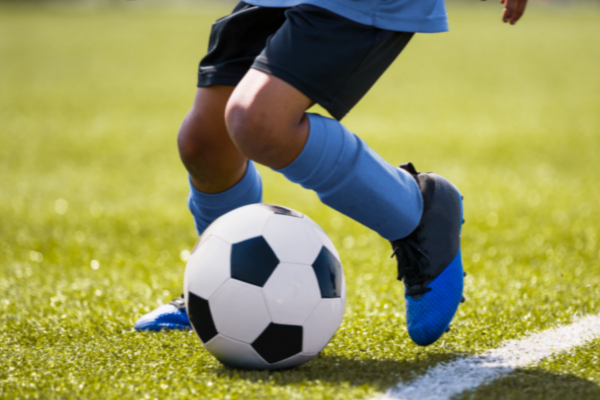
When the COVID-19 pandemic began in March 2020, schools and workplaces closed across the country. As a result of these lockdowns, team sports were paused at local high schools. For about 6 months, many student athletes participated in minimal activity, meeting once a week or not at all.
When restrictions started being lifted, there was a sudden influx of athletic injuries, specifically among the 13 – 18 age demographic. What’s the reason behind this increase?
Increased Training Volume
Our clinics have seen more significant injuries in the youth baseball and soccer populations over the past several months. One cause of this trend was a sudden increase in training volume. After not being active for so long, intensified training schedules led to a higher risk of overuse injuries.
Particularly for baseball players, returning to practice 7 days a week after not throwing an official pitch for months could lead to a repetitive use injury. These injuries can occur when consistent stress is placed on one group of muscles, the same posture is held too long or you have poor form.
Kids Are Still Growing
Growth spurts typically occur from ages 8 to 13 in girls and 10 to 15 in boys. During this time, bones develop faster than muscles gain strength, making younger athletes more susceptible to growth plate fractures. Growth plates are made up of cartilage and support growth near the end of our bones. At the end of puberty, this soft material hardens into solid bone. Growth plate injuries can stunt development, so it’s important to see a physical therapist or orthopedic surgeon to correct.
Strength training from a young age can help reduce the risk of injury, especially as ACL tears become more common in youth athletes. Developing a good strengthening program, working on drills and body control can help prevent non-contact injuries, which have increased in recent years.
Youth Safety Awareness Month
April is Youth Safety Awareness Month! It’s important for athletes and their parents to be educated on the risks of specialization in sports. We recommend participating in various sports throughout the year to work different muscle groups. To prevent overuse, try to take 12 weeks off between sports to reduce injury risk.
Although an off-season is crucial for student athletes, busy activity schedules often don’t allow it. In response, it’s essential to understand the importance of recovery time. For example, playing 5 days a week at a high level of intensity should be compensated with 2 days of rest.
If a practice or game is postponed, work on overall conditioning at home. Remember to always warm up before physical activity to increase body temperature and cool down afterwards to prevent muscle tightness.
Nutrition habits and hydration should also be considered. Student athletes should drink plenty of water and reduce their intake of processed foods. Eat more fruits and vegetables, lean proteins and whole grains to give your body the energy it needs to endure strenuous activity and prevent injury.
When it comes to proper training, consider the 10 percent rule. Our physical therapists and athletic trainers have been seeing many student athletes go from the couch to a high level of play. For instance, a runner coming back from an off-season should not immediately return to running 5 miles each day. Start with one mile and continue to build up your training regimen.
How Physical Therapy Can Help
When an injury occurs, we can determine the cause by addressing the athlete’s entire kinetic chain.
We see many baseball players with persistent elbow pain but oftentimes, this joint is not the main source of discomfort. The problem is somewhere else in the body, such as the shoulder or upper spine. When certain muscle groups are overworked, the body compensates in other areas, which may then bear the majority of the discomfort.
Our physical therapists can identify any deficits within the body and help improve movement patterns to prevent future injuries. We also educate the athlete and their parents on how to keep an issue from recurring.
In some cases, an untreated injury can get better with rest but it’s only a temporary fix. The pattern of ignoring pain can lead to greater injury and a possible need for surgical intervention, which we want to help student athletes avoid at all costs.
At Integrated Rehab, we work closely with local high school sports teams. Our Certified Athletic Trainers help to ensure student athletes compete to their highest potential, while prioritizing safety. To learn more about our physical therapy and athletic training services, contact us today!

